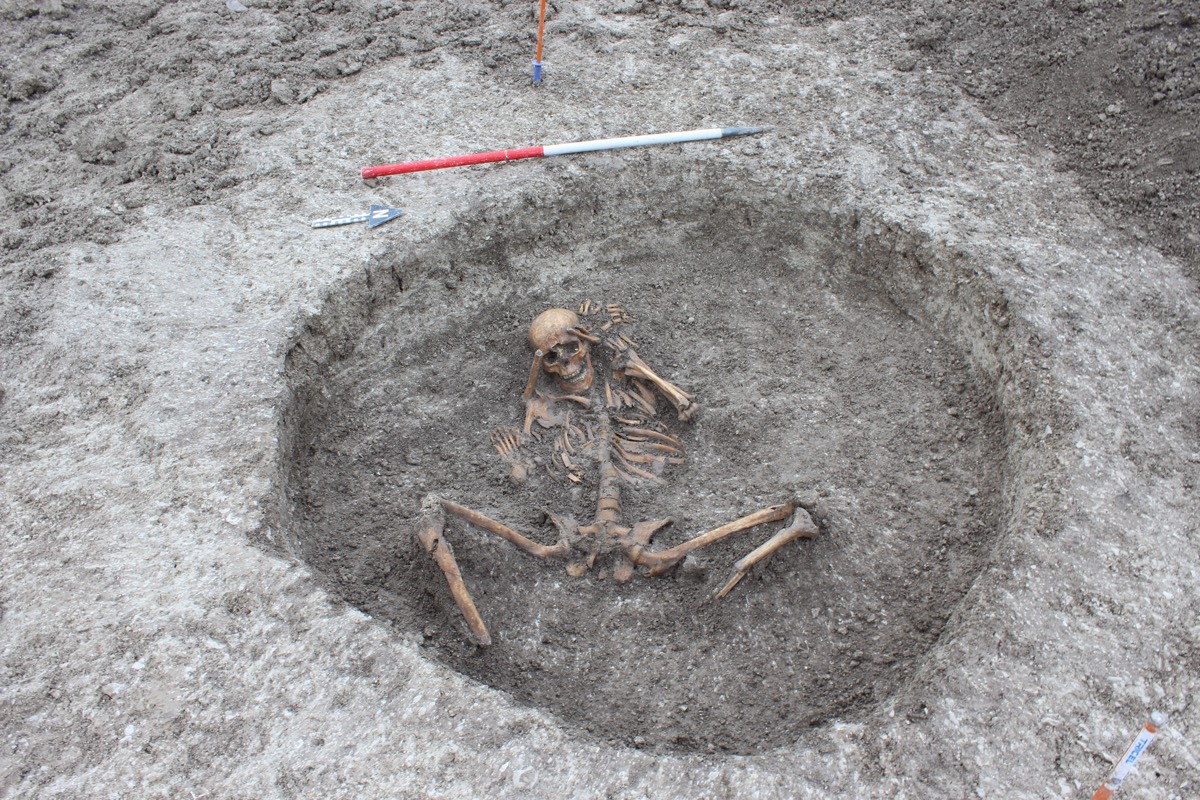Engineers Just Uncovered 26 'Ritually Buried' Skeletons While Digging a Pipeline in England

Engineers were digging pits to lay a new water pipeline recently in the English countryside — but the pits were already occupied by the dead.
According to a statement released yesterday (April 15) from the British utility company Thames Water, a pipe-laying project in Oxfordshire has led to the discovery of 26 human skeletons, some of which are believed to be nearly 3,000 years old. [In Photos: Boneyard of Iron Age Warriors]
The oldest skeletons are thought to date to the Iron Age (which lasted from the eighth century B.C. to the second century A.D.), experts from the local Cotswold Archaeology heritage society said in the news release, providing fresh insights into how local communities lived before the Roman conquest of Britain began in the first century.
Some of the skeletons were buried in what appeared to be a ritual manner, as they show similarities to nearby Iron Age pit burials that "might have involved human sacrifice," Cotswold Archaeology Chief Executive Neil Holbrook said in the statement.
These pre-Roman communities are thought to be linked to the Uffington White Horse, a 360-foot-long (110 meters) prehistoric figure of a horse carved into a nearby hillside, Holbrook said.
Among the skeletons in the new find, the diggers also uncovered a trove of artifacts, including fragments of dwellings, pottery, cutting tools, animal carcasses and a decorative comb. The skeletons and objects have been removed for forensic analysis so that the pipeline project may continue.
- 25 Grisly Archaeological Discoveries
- The 25 Most Mysterious Archaeological Finds on Earth
- Top 10 Mysteries of the First Humans
Originally published on Live Science.
Get the world’s most fascinating discoveries delivered straight to your inbox.

Brandon is the space / physics editor at Live Science. With more than 20 years of editorial experience, his writing has appeared in The Washington Post, Reader's Digest, CBS.com, the Richard Dawkins Foundation website and other outlets. He holds a bachelor's degree in creative writing from the University of Arizona, with minors in journalism and media arts. His interests include black holes, asteroids and comets, and the search for extraterrestrial life.


